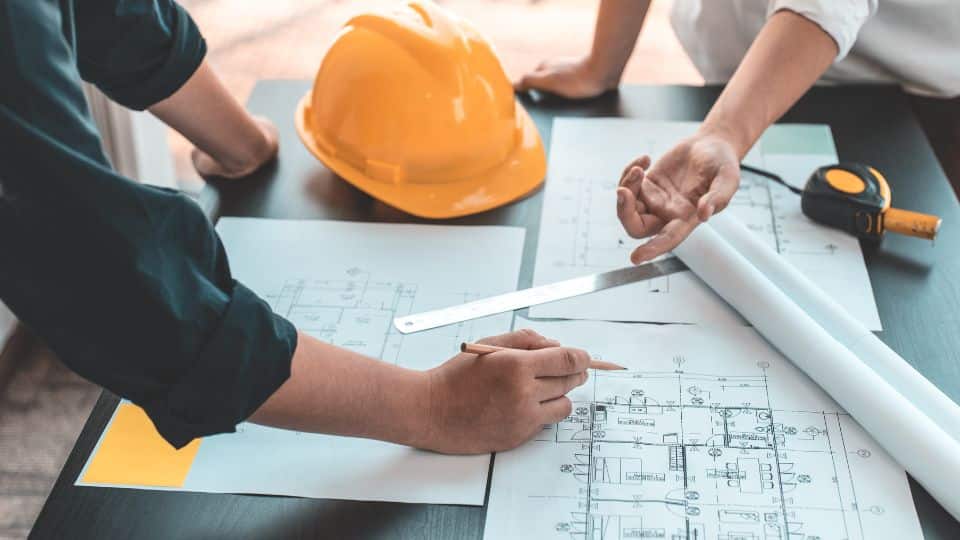Architect-Approved Home Improvement Ideas
Architect-Approved Home Improvement Ideas
Blog Article
Recognizing the Diverse Profession Paths Available for Aspiring Architect
As a hopeful Architect, you have a world of profession courses waiting for you. Whether you're attracted to traditional design or the subtleties of lasting design, there's a specific niche that lines up with your passions.
Traditional Design: Designing Frameworks and structures
Typical style concentrates on creating structures and frameworks that blend performance with visual appeal. As you explore this field, you'll appreciate the elaborate balance between type and function. You'll find out to attract ideas from historic designs, including components like proportion, products, and workmanship. Your layouts can mirror social heritage, showcasing neighborhood traditions while meeting modern needs.
You'll establish skills in drafting, model-making, and website evaluation, enabling you to imagine and communicate your concepts properly. Involving with clients, you'll need to understand their vision and convert it right into possible designs.
Furthermore, constructing codes and sustainability methods are necessary in your work, ensuring your frameworks are risk-free and environmentally pleasant. As you expand in your job, you'll locate opportunities in property, industrial, or perhaps restoration tasks, each offering special difficulties. Embracing typical design paves the method for a fulfilling job that admires the past while shaping the future.
Urban Preparation: Shaping Areas and Public Spaces
As an aspiring Architect, you can play a vital role as a city planner, changing how areas function and connect. By employing community involvement methods, you'll guarantee that citizens have a voice fit their atmosphere. And also, integrating lasting layout principles will certainly aid create areas that not just meet today's requirements yet also secure the future.
Role of Urban Planners
While lots of may believe of architects as the sole visionaries behind structures, city organizers play a crucial duty in shaping the wider landscape of areas and public areas. By working together with various stakeholders, you'll help make parks, transport systems, and property areas that promote social communication and availability. Your know-how in spatial style and community characteristics permits you to visualize future growth while maintaining cultural heritage.
Community Involvement Methods
Efficient community engagement methods are essential for metropolitan coordinators to assure that the voices of homeowners are heard and valued in the planning process. To foster purposeful dialogue, you need to prioritize open forums and workshops where neighborhood members can reveal their ideas and worries. Use studies and social media to get to a broader target market, ensuring varied perspectives are included. Working together with neighborhood organizations can boost count on and promote deeper links. It is very important to supply clear information regarding suggested projects and decision-making procedures, allowing citizens to really feel informed and equipped. By proactively listening and integrating feedback, you'll produce rooms that reflect the neighborhood's demands, inevitably resulting in even more sustainable and successful metropolitan settings. Embrace transparency and constant dialogue for enduring influence.
Sustainable Design Principles
When designing urban rooms, including lasting style principles is vital for producing atmospheres that flourish both ecologically and socially. You should begin by concentrating on power performance, making use of products that minimize waste and promote recycling. Consider integrating environment-friendly rooms, like parks and yards, to boost biodiversity and boost air high quality. Promoting walkability and public transportation can lessen reliance on vehicles, fostering a much healthier neighborhood.
Designing with water conservation in mind is likewise essential-- think of rain yards and permeable surface areas to handle stormwater. Involving community participants during the preparation process assurances that the spaces you produce meet their requirements and urge social interaction. By welcoming these principles, you'll add to vibrant, lasting city landscapes that benefit every person.

Landscape Style: Developing Sustainable Outdoor Settings
As you check out landscape architecture, you'll uncover necessary style principles that develop stunning and useful outside spaces. Lasting methods play an important duty in guaranteeing these environments prosper while reducing ecological effect. And also, you'll find a selection of profession possibilities that enable you to make an actual difference in just how people connect with nature.
Design Concepts in Landscape
Comprehending style concepts in landscape style is essential for creating sustainable outside atmospheres that balance with nature. You'll require to consider components like equilibrium, proportion, and scale to assure your styles really feel natural and inviting. Integrating indigenous plants not only improves biodiversity however additionally decreases water use, making your landscape resistant. Think regarding the circulation of space and exactly how individuals interact with it; pathways and seating areas must welcome expedition and relaxation. Additionally, pay interest to seasonal adjustments, making with materials that complement the surroundings year-round (Architect). By prioritizing sustainability and appearances, you can create outdoor areas that improve the neighborhood and advertise health. Welcoming these concepts will certainly establish a solid structure for your career in landscape architecture.
Lasting Practices Introduction
Lasting methods in landscape architecture not only concentrate on appearances yet likewise prioritize ecological wellness and resource conservation. By incorporating indigenous plants, you enhance biodiversity and reduce the demand for chemical fertilizers and pesticides. Applying effective irrigation systems aids save water and reduces drainage, securing close-by ecosystems. You can make areas that advertise soil health, such as making use of organic products and practicing permaculture concepts. Additionally, including eco-friendly framework, like rain yards and porous sidewalks, aids in stormwater monitoring and decreases city warm. You add to a healthier world and give spaces that promote community connection when you develop outdoor atmospheres with sustainability in mind. Inevitably, these practices ensure your layouts benefit both people and the setting for years to come.
Career Opportunities Exploration
With a strong foundation in sustainable methods, landscape design uses a selection of job paths that allow you to make a meaningful influence on the atmosphere. You might work as a landscape designer, producing visually pleasing and practical outside areas, or focus on ecological restoration, helping to revive damaged ecosystems. Urban planners frequently collaborate with landscape architects to create green rooms in city setups, improving city livability. If you're passionate about education, take into consideration coming to be a landscape style teacher, inspiring future generations. Additionally, you might deal with nonprofits concentrated on environmental sustainability or participate in study to introduce new practices. Each course not just shapes beautiful settings yet likewise fosters a much healthier world for future generations.
Lasting Design: Concentrating on Eco-Friendly Practices
As you explore your occupation in architecture, accepting environmentally friendly techniques can set you apart in an affordable field. Sustainable layout concentrates on developing buildings that reduce ecological impact while improving owner wellness. By including renewable products, energy-efficient systems, and lasting building strategies, you'll contribute to a greener future.
Begin by obtaining expertise of environment-friendly accreditations like LEED or BREEAM, which can boost your qualifications. Consider exactly how natural light, air flow, and thermal performance can maximize style. Team up with designers and ecological consultants to introduce options that minimize waste and conserve resources.
Do not neglect the value of area participation-- interesting regional stakeholders can motivate styles that harmonize with the environment. As clients significantly focus on sustainability, your expertise in green practices will certainly not just attract projects but additionally satisfy your enthusiasm for responsible design. Embrace this important facet of the occupation, and view your profession prosper.
Historic Conservation: Safeguarding and Recovering Cultural Heritage
While you start on your building journey, think about the crucial role of historical conservation in preserving our social heritage. This field concentrates on the security and reconstruction of significant buildings, websites, and frameworks that inform the stories of our past. By participating in historical preservation, you'll aid guard the building legacy that shapes area identity.
As a historic preservation Architect, you'll evaluate historic significance and evaluate the condition of structures. You'll work very closely with conservationists and chroniclers to ensure genuine remediation methods are utilized. This profession path image source allows you to blend creative thinking with research, allowing you to create remedies that appreciate initial products and workmanship.
Your work not only contributes to sustainability by reusing existing structures however likewise cultivates a sense of pride within neighborhoods. Embracing this course will assist you come to be a guardian of background, maintaining the stories and aesthetics that enrich our lives.
Inside Design: Enhancing Indoor Spaces
Historical conservation and indoor architecture both share a dedication to improving the developed setting, but they concentrate on various facets. While historic preservation stresses preserving a framework's historic and cultural value, interior style absolutely nos in on optimizing interior areas for functionality and aesthetic appeals.
As a hopeful Architect, you'll find that interior design allows you to mix creative thinking with technical abilities. You'll create rooms that not only look great but additionally advertise convenience and performance. This area includes understanding how light, shade, and products communicate within an area, influencing state of mind and usability.
You'll deal with different jobs, from residential homes to commercial offices, making sure view it now that each atmosphere meets the demands of its owners. By prioritizing customer experience, you can transform interiors right into functional and inspiring rooms, making a significant effect on exactly how individuals connect with their surroundings. Welcome the opportunity to boost interior atmospheres and shape the means individuals function and live.
Industrial Layout: Merging Capability With Visual Appeals
Commercial style plays a crucial role in developing items that perfectly blend looks with performance, making sure that what you utilize day-to-day is not only aesthetically attractive but additionally useful. As a hopeful Architect, you could immerse on your own in this area, concentrating on creating everything from furniture to customer electronic devices. Your work involves comprehending user needs, materials, and producing processes, permitting you to create innovative services that boost everyday experiences.
In commercial style, you'll often work together with suppliers, marketing professionals, and engineers, making certain that your designs are not only beautiful but also practical. This job path supplies a vibrant atmosphere where creativity satisfies usefulness, making it a gratifying selection for engineers interested in forming the products of tomorrow.
Often Asked Questions
What Educational Certifications Do I Need to Become an Engineer?
To become an architect, you'll need an expert degree in design, commonly a Bachelor's or Master's. Furthermore, you'll need to finish a teaching fellowship and pass the Architect Enrollment Examination to practice legitimately.
Are There Qualification Needs for Various Architectural Occupation Paths?
Yes, there're accreditation needs for numerous architectural paths. Architect. You'll require to pass exams, full teaching fellowships, and in some cases pursue specialized training, depending upon your selected emphasis, like landscape architecture, metropolitan design, or historic preservation
What Software Program Skills Are Necessary for Designers Today?

How Can I Gain Practical Experience While Examining Architecture?
You can get sensible experience by interning at architectural firms, joining style competitors, offering for community projects, or working together with schoolmates on real-world assignments. These opportunities improve your abilities and build useful connections in the market.
What Task Opportunities Exist Outdoors Conventional Architecture Firms?
You can check out various job opportunities outside traditional style companies, like metropolitan preparation, interior decoration, landscape style, building management, property development, or perhaps roles in sustainability consulting. Each offers one-of-a-kind obstacles and rewards.
Whether you're attracted to conventional architecture or the subtleties of lasting style, there's a specific niche that aligns with your rate of interests.When making urban rooms, including lasting style concepts is vital for producing environments that thrive both ecologically and socially.As you check out landscape architecture, you'll discover necessary style principles that produce stunning and functional exterior areas.Understanding design concepts in landscape design is crucial for creating sustainable outdoor settings that integrate with nature.In commercial style, you'll commonly team up with producers, engineers, and online marketers, ensuring that your styles are not only stunning but likewise viable.
Report this page